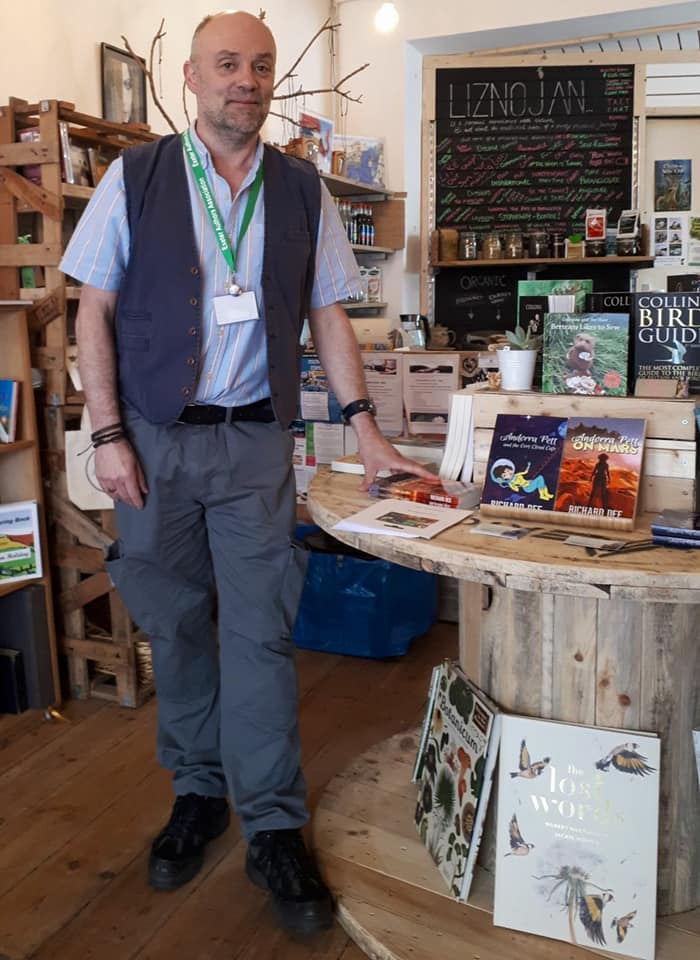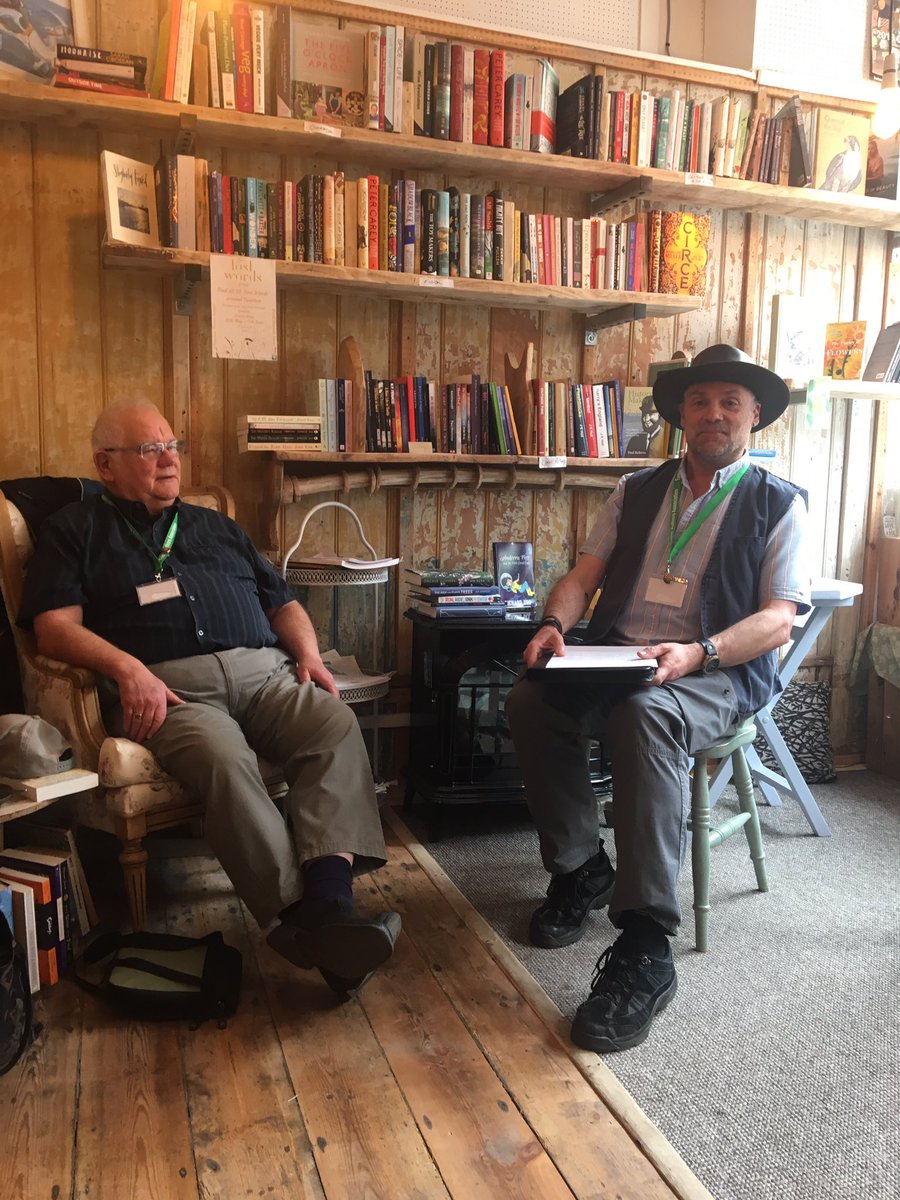First of all, a couple of pictures from the launch event last Friday. Liznojan in Tiverton was the venue (thanks to Jackie and Kayleigh), and it went well. I described how I came to write about Andorra Pett and treated the assembled throng to a short reading.
 Then we moved on to questions about the setting and how my version of life on Mars worked.
Then we moved on to questions about the setting and how my version of life on Mars worked.
I was pleased to get the chance to explain how I see my creation. I love talking about world building and research. Online or person to person, if you get me started I’ll quite happily ramble on until your eyes glaze over and your ears start to bleed.
I’m passionate about creating worlds because I want to make sure that you believe. Believe that the setting exists, believe that its possible to do the things that my characters do. In fact, I think you should be as comfortable reading about life in another place and time as you would be reading about how people live in another country today.
All that takes quite a bit of planning. I mistakenly thought that Sci-fi wouldn’t require much in the way of research, after all, how can you research the future?
Then I found that before you can create the future, you have to understand the present. I found out something else as well, but I’ll keep that for a bit later. Every future starts from a present, so if you can pick a fact, you can expand it and twist it to fit your narrative. But only if you understand it first.
I now do as much research as I do writing. I scour the internet and magazines such as Focus and National Geographic for information on the latest ideas and scientific developments, looking to see where they could fit into my worlds.
The bonus is that you very often come across a fact that seems to be unconnected to your research but on closer inspection provides you with a place to start on another adventure.
I started writing down a lot of notes about the way that I built worlds. As I became more active in writing circles I occasionally presented a workshop on the methods I used. This became quite popular and I’ve been working on a more structured course that I could offer to those who might be interested. I wanted to help people avoid the mistakes I made. Hopefully, I can help them avoid the frustration that so nearly made me give up what was a great plot because I couldn’t get the setting right.
At the moment, it’s still a work in progress. Despite it being just about written, I’m having trouble finding the best way to structure it, depending on which platform I finally decide to place it on. All the hosts seem to have different requirements for content, pricing and video. In the end, I might just offer it as subscription content on my own website, if I can sort the security aspects out.
The whole course is based around my novel Ribbonworld, which uses the techniques that I want to tell you about. It was written after I had spent a long time struggling with trying to combine my plot with the world I had created for it. I learnt a lot of valuable lessons in the process, Ribbonworld was the result. It seems only right that I use the book to illustrate the course, with extracts and commentary.
Here’s the current title page of my course, showing what the course covers.
Contents
Introduction and objectives, Video
The basic layout of the course, PDF
The Main Principles, Video
The Child analogy (Theory of Growth), how to develop the story, PDF
Exercise
Part 1, Creation and destruction, Overview Video
Creation and destruction, PDF worksheet
Research and examples, PDF worksheet
Location as a character, PDF worksheet
Realism, PDF worksheet
Creation and destruction, summary and exercise
Part 2, Technology and population, Video
Technology, PDF worksheet
Population, PDF worksheet
Technology and Population, summary and exercise
Part 3, Plotting, Video
Plotting, PDF worksheet including. Taking the reader with you. Realism.
Location as a Character. Technology. Characters.
Plotting exercise
Part 4, Summary and recap, Video
Summary and recap, PDF, the most important points in review.
I also intend to offer a chance to submit the exercises for critique, should anyone wish to do so. As I said, I think it’s fairly comprehensive, I will get it finished soon and then I’ll be looking for volunteers to try it out.
You might remember, I said at the start that there was another thing that I found out when I was researching? It’s quite simple. It’s not all about inventing newer and shinier stuff for your world. There are so many of the things that we do on Earth today that could be done on another planet, tomorrow. So much that would be useful to the explorer of the future. It just needs the odd tweak and a way to get it out there. The great advantage of using familiar stuff is that the reader can immediately recognise it and feel comfortable.
And once they’re comfortable, then you can begin.
![]()




